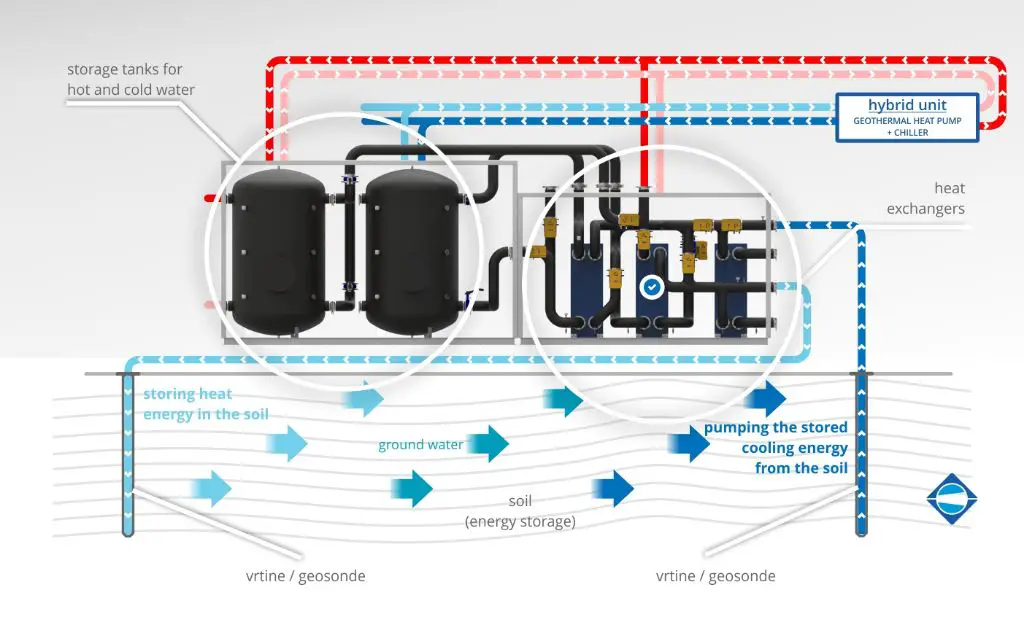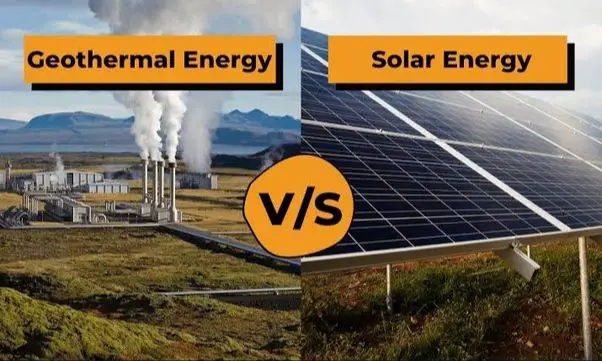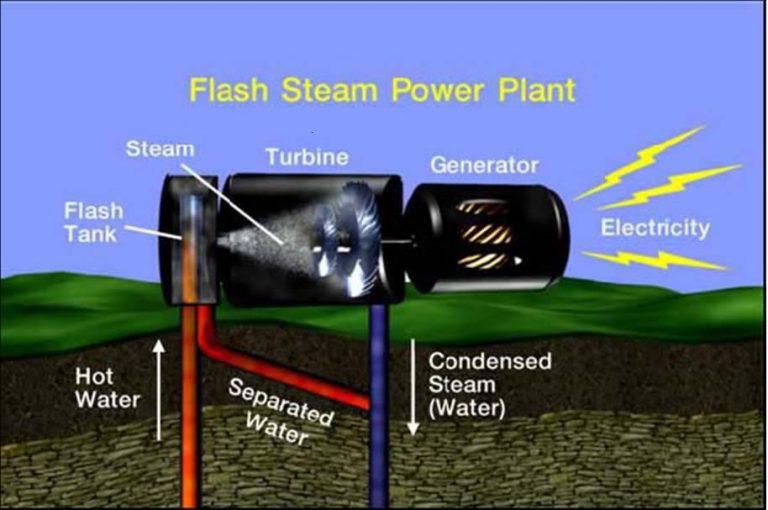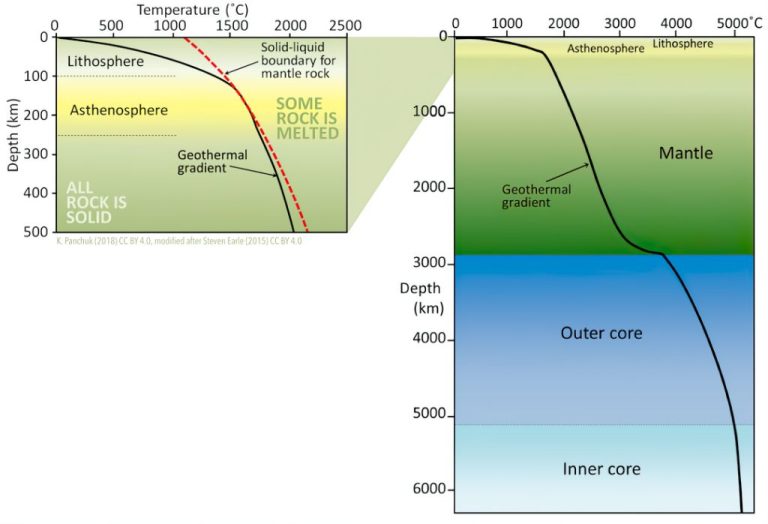What Areas Can Geothermal Energy Be Used?
Geothermal energy is thermal energy generated and stored within the Earth. This natural form of energy comes from the heat within the Earth’s core and from radioactive decay of minerals. The word “geothermal” comes from the Greek words for “geo” (earth) and “thermos” (heat). Steam or hot water from geothermal reservoirs deep underground can be accessed via wells and used directly or to generate electricity.
This renewable energy source has a wide range of applications. Geothermal energy can be used directly for heating and cooling buildings, growing plants in greenhouses, drying crops, heating water at fish farms, and several industrial processes. It can also be used to produce electricity. Today, geothermal energy provides over 20 billion kilowatt-hours (kWh) of electricity per year in the United States, the capacity to meet the needs of about 2 million residential customers.
Electricity Generation
Geothermal energy can be used to generate electricity through geothermal power plants. There are three main types of geothermal power plants: dry steam, flash steam, and binary cycle.
Dry steam power plants use steam directly from a geothermal reservoir to turn generator turbines. The first geothermal power plant was a dry steam plant built in Italy in 1904. These plants are suitable where underground temperatures are very high.
Flash steam power plants take high-pressure hot water from deep inside the earth and convert it to steam to drive turbine generators. Any dissolved gases flash off and separate from the water as it surfaces. Flash steam plants are the most common type of geothermal power plant in operation today.
Binary cycle power plants transfer the internal heat from geothermal hot water to another liquid. The secondary liquid boils at a lower temperature than water, so it can convert to vapor more easily to drive the turbines. Binary cycle plants can operate with lower temperature waters than dry and flash steam plants.
Heating and Cooling Systems
Geothermal energy can provide heating and cooling through various direct use and geothermal heat pump systems. These systems take advantage of relatively constant temperature shallow ground or surface water as a heat source and heat sink.
Geothermal heat pumps, also known as ground source heat pumps, are the most common way geothermal energy is used for heating and cooling. These systems transfer heat between the ground and buildings for space heating, cooling, and hot water. They use a network of underground pipes that circulate water or an antifreeze solution through the ground, absorbs heat, and carries it into the building.
In winter, the fluid collects heat from the Earth and carries it indoors. The indoor heat exchanger gives off heat before the fluid recirculates back to the ground to collect more heat. In summer, the system reverses and takes heat from the building to provide cooling.
Direct use applications include district heating systems, pool heating, greenhouse heating, industrial process heating, aquaculture pond heating, and snow melting. Hot water from a geothermal reservoir can be piped directly into facilities for these heating purposes. Some direct use applications combine electricity generation with the captured heat energy.
The direct use of geothermal energy offers flexibility for a wide range of applications and provides a substantial energy saving compared to conventional fuel sources. It also reduces operating costs and decreases emissions.
Agricultural Applications
Geothermal energy has several important uses in agriculture. One of the most common is heating greenhouses. The steady, mild heat provided by geothermal systems allows greenhouses to be kept at optimal temperatures year-round. This promotes better plant growth and crop yields compared to conventional greenhouse heating systems.
Aquaculture, the farming of fish and other aquatic organisms, also relies on geothermal heating. Maintaining proper water temperatures in fish farming ponds is critical. Geothermal heat pumps can warm the ponds efficiently and economically.
Crop drying is another agricultural application of geothermal energy. Many crops need to be dried after harvesting before they can be processed and sold commercially. Geothermal heat provides a clean, renewable source of energy for crop dryers.
Industrial Uses
Geothermal energy has many applications in industrial settings. One major use is for food dehydration. The heat from geothermal sources can be used to efficiently dry fruits, vegetables, and meats. This allows for food preservation and longer shelf life. Geothermal heat is especially suitable for dehydration because it provides a consistent low temperature over long periods.

Another common industrial application is in laundries. Geothermal heat can provide hot water for washing machines in large-scale laundry facilities. The heat is used to sanitize linens and garments while cleaning. Geothermal energy is a reliable and cost-effective way to produce the hot water needed by industrial laundries.
Bathing and swimming are also facilitated by geothermal energy in some locations. The hot water can be used for public baths, therapeutic bathing, and even swimming pools. The mineral content of some geothermal waters provides additional therapeutic benefits beyond just the heat.
Geothermal energy enables bottling of pure water in some cases. The heat brings water to the surface where it can be collected and bottled rapidly. The hot water is often very clean and free of contaminants, making it ideal for bottling. This allows companies to efficiently produce bottled water for consumer sales.
Residential Uses
Geothermal energy has several applications in residential settings:
Space heating
Geothermal heat pumps can provide space heating for homes by transferring heat stored in the ground into buildings during winter. Geothermal systems use buried pipes to circulate water or antifreeze solutions through the ground, absorbing heat which is then pumped indoors.
Water heating
Geothermal heat pumps can also provide hot water for domestic use in homes. The systems use the same buried pipe loops to transfer heat from the ground into water tanks.
Snow melting
Running pipes under driveways, sidewalks or other surfaces can melt snow using geothermal energy. The ground loop transfers heat into hydronic piping grids under the surfaces to be cleared of snow.
Recreational Uses
Geothermal energy has a number of recreational uses, with one of the most popular being hot springs bathing and swimming. Hot springs occur naturally where geothermally heated groundwater emerges from the Earth’s crust. For centuries, people have used hot springs for bathing, owing to the belief in their healing and therapeutic benefits. Today, hot springs are still used recreationally for relaxation and health purposes.
In locations where hot springs emerge, they are often developed into spas and resorts focused around bathing and swimming. The geothermally heated water provides a unique and soothing experience for bathers. Examples of famous hot spring resorts include the Blue Lagoon in Iceland, which receives over 1.7 million visitors per year, and the onsen baths in Japan.
In addition to natural hot springs, geothermal energy can also be used to heat water for recreational pools and spas. While hot springs rely on naturally occurring geothermal reservoirs, engineered geothermal systems can pipe hot water from underground to the surface to fill pools and tubs. This provides the benefits of geothermal waters even in locations without natural hot springs. For example, a number of resorts, water parks, and community pools around the world are heated using geothermal energy.
Environmental Benefits
Geothermal energy has several major environmental benefits compared to fossil fuels and other conventional energy sources. First and foremost, geothermal power plants emit very little greenhouse gases because no fuels are combusted for energy production. The steam and hot water used to generate electricity come directly from the earth’s natural heat, rather than from burning coal, natural gas, or oil. This makes geothermal an extremely clean and renewable energy source.
In addition, geothermal energy does not contribute to air pollution like particulate matter and smog-forming emissions. This makes it better for human health, especially in densely populated areas. Geothermal also has a tiny land footprint per kWh produced compared with other energy sources. The subsurface nature of geothermal reservoirs means very little above-ground space is disturbed. This results in minimal habitat disruption and soil erosion. Overall, geothermal checks all the boxes for sustainability with its renewable, low-emission, and low-impact characteristics. It provides a reliable baseload power source without depleting finite resources or harming ecosystems. This makes geothermal an excellent way to reduce the environmental footprint of energy production.
Challenges and Limitations
While the opportunities for geothermal energy are significant, there are some key challenges and limitations to be aware of:
The most substantial barrier is the high upfront costs required for geothermal systems. Drilling geothermal wells and installing the piping and heat exchangers can require millions of dollars in initial investments. This makes financing and attracting investors difficult, especially for smaller scale projects.
Geothermal energy is also geographically limited based on suitable subsurface heat sources and aquifers. While traditional hydrothermal resources are concentrated in the western U.S. and other tectonically active areas, enhanced geothermal systems could expand geothermal capacity in other regions – but this requires advanced technology that is not yet cost effective.
Future Outlook for Geothermal Energy
The future looks bright for continued growth and innovation in geothermal energy. As climate change concerns mount and clean energy goals expand globally, geothermal is poised to play a major role as a reliable, renewable baseload power source.
With support from pro-renewables policies and legislation, geothermal capacity is projected to double worldwide by 2030. Developing economies with substantial geothermal resources, such as Indonesia, Kenya, and the Philippines, are expected to drive much of this growth by exploiting their untapped potential.
Technological improvements are also opening up new possibilities for geothermal systems. Enhanced geothermal systems (EGS) could dramatically increase the range of geothermal by accessing hot rock resources almost anywhere with hydraulic fracturing and fluid injection techniques. Floating geothermal technology can bring geothermal power generation offshore. And new hybrid plant designs can boost productivity and flexibility.
With increased investment in research and development, geothermal energy’s full potential is still being unlocked. Government incentives for renewable energy sources will further propel geothermal adoption. The geothermal industry stands ready to deliver clean, consistent energy to meet rising electricity demand far into the future.






